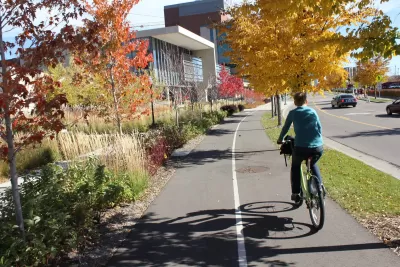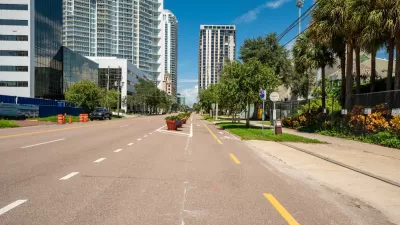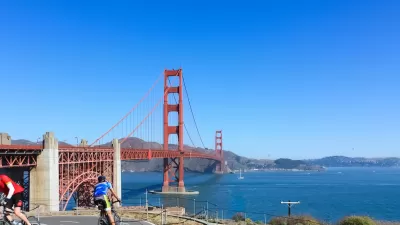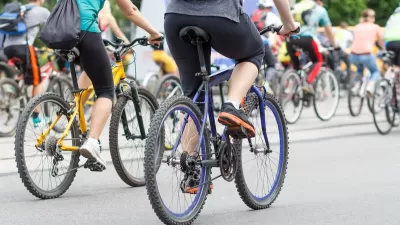Twice as many men as women commute by bike in Minneapolis-St. Paul, and the likely reasons are varied.

Greta Kaul writes that data shows the Twin Cities has one of the highest levels of bike commuting in the country, but it also has a gender gap in cycling. "In the Minneapolis-St. Paul metro area, men who work were twice as likely to commute via bike as women who work, at 1.2 percent, compared to 0.6 percent."
While this gap is smaller than it is in most other U.S. cities, men still commute by bike more than women generally. The reasons for this difference include women’s concerns about safety, the perceived need to be "put together" at work, and the greater responsibility put on women to transport children.
While Minneapolis-St. Paul is relatively bike-friendly, the gender gap suggests that changes still need to be made to bring more women into cycling. Kaul notes that safer streets would encourage women to bike as well bike shops that make biking accessible to women and other underrepresented groups. "The gender gap isn’t the only gap activists are working to close in biking in Minnesota, said [Linnea] House, of Move Minnesota. There are also gaps for people of color and seniors, she said."

Alabama: Trump Terminates Settlements for Black Communities Harmed By Raw Sewage
Trump deemed the landmark civil rights agreement “illegal DEI and environmental justice policy.”

Study: Maui’s Plan to Convert Vacation Rentals to Long-Term Housing Could Cause Nearly $1 Billion Economic Loss
The plan would reduce visitor accommodation by 25% resulting in 1,900 jobs lost.

Why Should We Subsidize Public Transportation?
Many public transit agencies face financial stress due to rising costs, declining fare revenue, and declining subsidies. Transit advocates must provide a strong business case for increasing public transit funding.

Wind Energy on the Rise Despite Federal Policy Reversal
The Trump administration is revoking federal support for renewable energy, but demand for new projects continues unabated.

Passengers Flock to Caltrain After Electrification
The new electric trains are running faster and more reliably, leading to strong ridership growth on the Bay Area rail system.

Texas Churches Rally Behind ‘Yes in God’s Back Yard’ Legislation
Religious leaders want the state to reduce zoning regulations to streamline leasing church-owned land to housing developers.
Urban Design for Planners 1: Software Tools
This six-course series explores essential urban design concepts using open source software and equips planners with the tools they need to participate fully in the urban design process.
Planning for Universal Design
Learn the tools for implementing Universal Design in planning regulations.
Caltrans
Smith Gee Studio
Institute for Housing and Urban Development Studies (IHS)
City of Grandview
Harvard GSD Executive Education
Toledo-Lucas County Plan Commissions
Salt Lake City
NYU Wagner Graduate School of Public Service





























